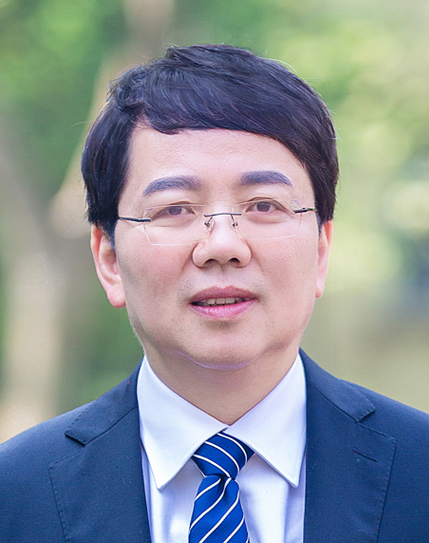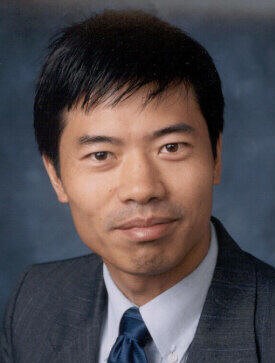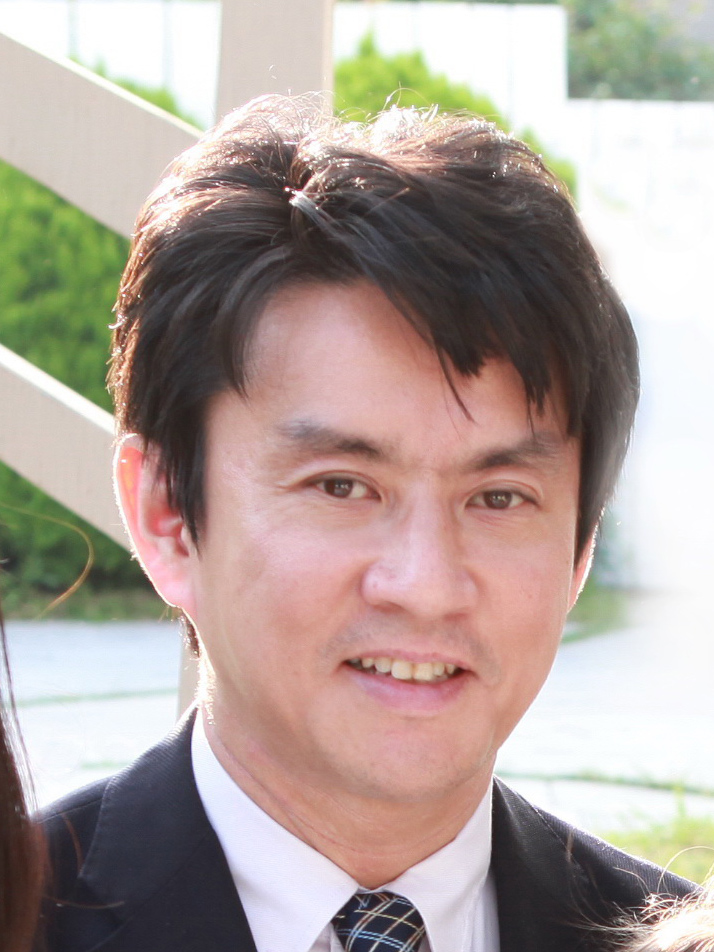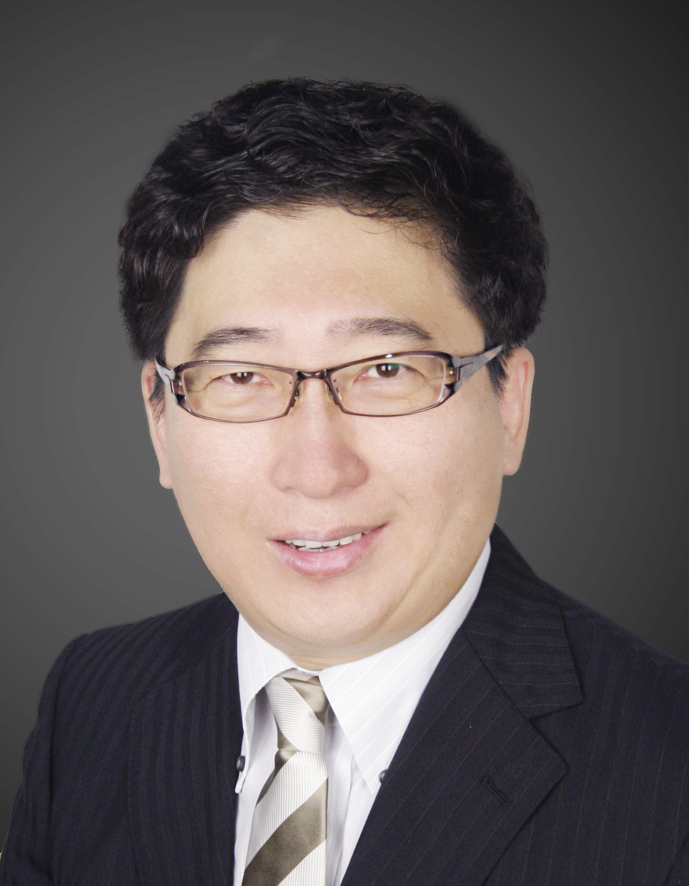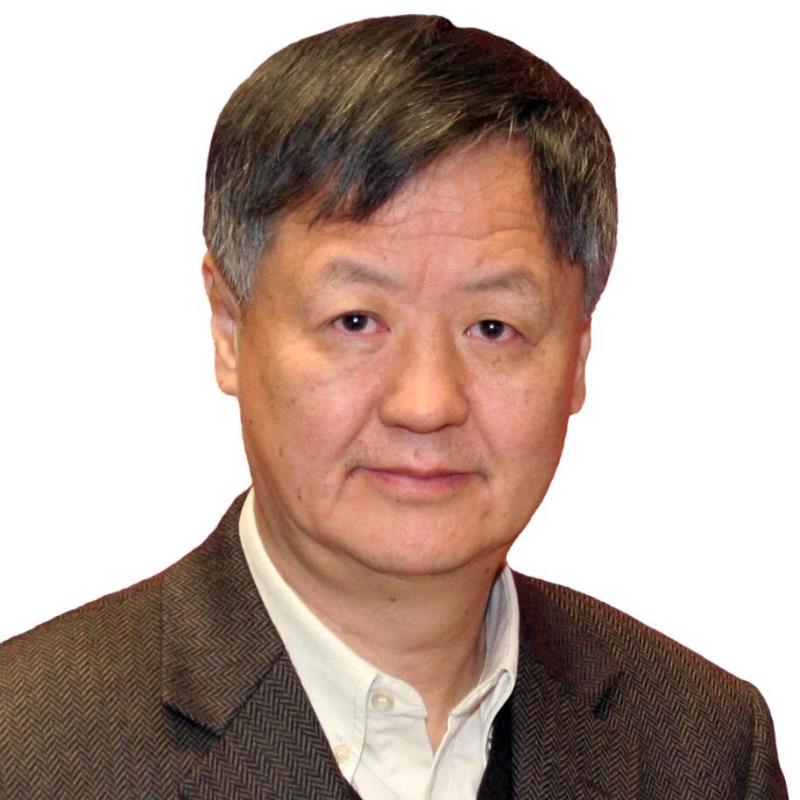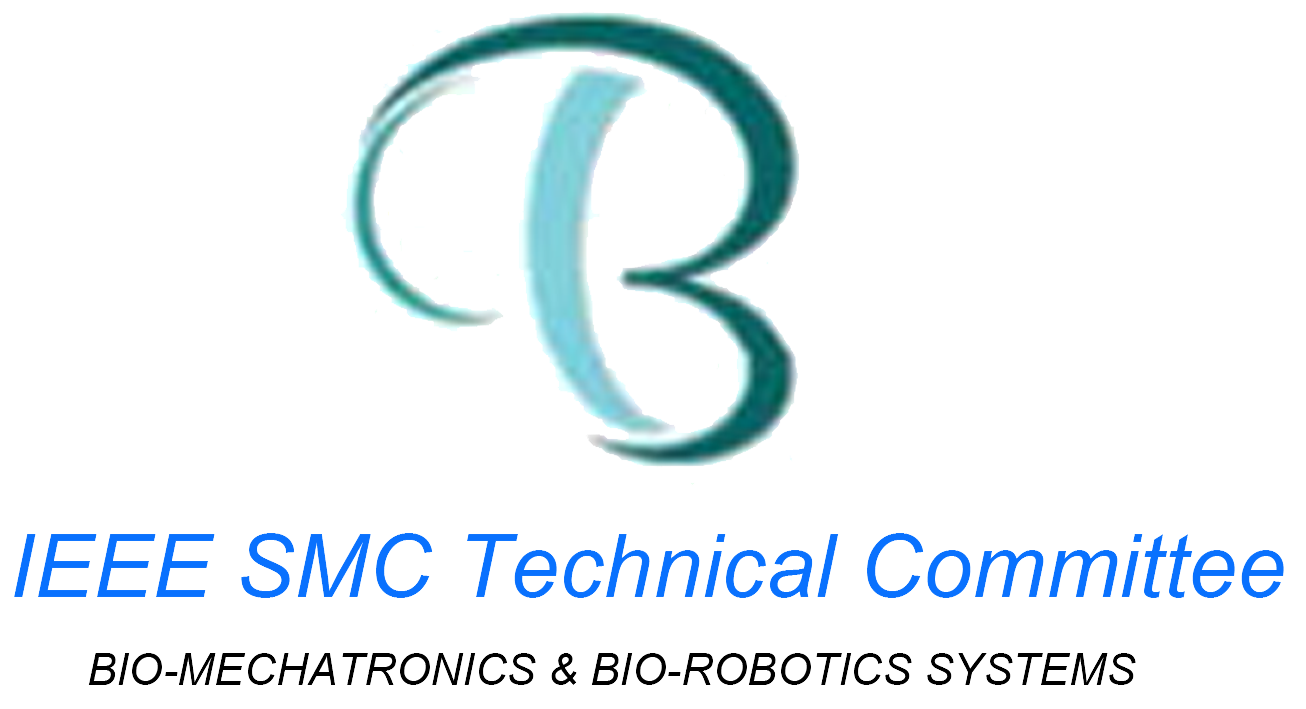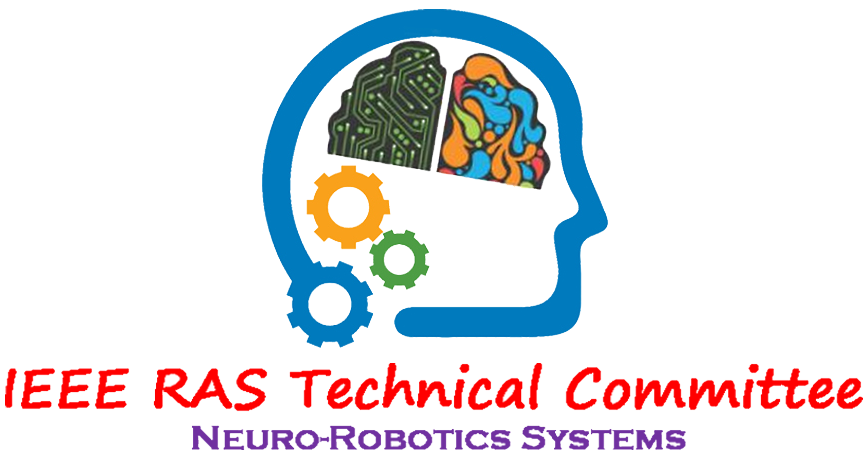PLENARY TALKS
Wednesday, July 3, 2019
Venue: Toyonaka Campus
| TIME | SESSION |
| 9:00-9:45 | PLENARY 1 Title:Future of Robotics: The Tri-Co (Coexisting-Cooperative-Cognitive) Robots Han Ding, Huazhong University of Science and Technology, China |
| 9:45-10:30 | PLENARY 2 Title:Intelligent Control Based on Neurdynamic Optimization Jun Wang, City University of Hong Kong, Kowloon, Hong Kong |
Thursday, July 4, 2019
Venue:Toyonaka Campus
| TIME | SESSION |
| 08:30 – 9:15 | PLENARY 3 Title: What is the Next Industrial Revolution? Mengchu Zhou, New Jersey Institute of Technology, USA |
| 09:15 – 10:00 | PLENARY 4 Title: Novel Types of Biomimetic Father-son Underwater Robots Shuxiang Guo, Beijing Institute of Technology, China |
Friday, July 5, 2019
Venue: Toyonaka Campus
| TIME | SESSION |
| 08:55 – 9:40 | PLENARY 5 Title: Digital and Physical Twins for Design and Evaluation: Human, Digital Actor and Humanoid Eiichi Yoshida, National Institute of Advanced Industrial Science and Technology, Japan |
Plenary Speakers
Han Ding, Professor, Huazhong University of Science and Technology,China
Future of Robotics: The Tri-Co (Coexisting-Cooperative-Cognitive) Robots
Abstract: Tri-Co Robots (Coexisting-Cooperative-Cognitive Robots) are those that can naturally interact and collaborate with the environment, including humans as well as other robots, and adapt to new situations. Coexistence will allow robots to ubiquitously and safely work alongside humans, considerably increasing our efficiency and quality of life. Cooperation will enable robots to collaborate and coordinate effectively with other agents through communication and interplay. Cognition will provide robots the resources to gather information, perceive and predict behaviors, and respond accordingly. This will all be achieved through state-of-the-art machine learning, control and planning algorithms. Key characteristics of Tri-Co Robots are: plastic and dexterity, multi-modal perception, and working autonomously and collaboratively. In particular, the development of rigid-flexible-soft robots and efficient solution methods are essential to achieve adaptation to environmental uncertainty and compliant interactions with humans and other robots.
This talk will introduce the current research activities of robotics in China, especially the Tri-Robot Research Plan of NSFC (National Natural Science Foundation of China). It will discuss the primary scientific challenges and key scientific problems of the plan, mainly focusing on mechanism, perception and control. The talk will also forecast China’s expected breakthroughs and goals in Tri-Co robot research. 、Finally, the talk will present recent research results of our group and discuss current and future challenges.
Biography: Prof. Han Ding received his Ph.D. degree in Mechatronics from Huazhong University of Science & Technology (HUST) in 1989. Supported by the Alexander von Humboldt Foundation, he worked at University of Stuttgart, Germany in 1993. He obtained the National Distinguished Youth Scientific Fund in 1997 and was awarded the “Cheung Kong” Chair Professor at Shanghai Jiao Tong University in 2001. He was elected a member of Chinese Academy of Sciences in 2013.
Prof. Ding has long dedicated himself to research in the field of robotics and digital manufacturing, and has successfully combined both technologies. He published three academic books and more than 300 journal papers, and licensed more than 60 patents in China.
Prof. Ding is currently the chairman of Academic Committee of HUST and the director of the National Innovation Institute of Digital Design and Manufacturing. He is also the leader of steering expert group of the NSFC Tri-Co Robot major research program.
Mengchu Zhou, Distinguished Professor, Fellow of IEEE, IFAC, AAAS and CAA, New Jersey Institute of Technology, USA
What is the Next Industrial Revolution?
Abstract: Human beings have experienced two major industrial revolutions. The first one took place in the 19th century, which replaced muscle power from humans and animals with mechanical power. The second one started in the middle 20th century, which provided people and societies with Internet. It was built with the technologies from computing, communication, networking and information storage. Both offered unprecedented productivity increases. What will be the next one? This talk intends to answer this question by presenting some recent development of Internet of Things (IoT) and smart systems. IoT was selected by IEEE as a major initiative to develop and advance over the next few years. Several recent studies have predicted the huge growth of IoT and tremendous benefits to the world economy. It was expected that 26 billion IoT units would be installed by year 2020, generating $300 billion in revenue. The IoT will generate an additional $1.9 trillion in economic value. We plan to present a system engineering approach to Internet-of-Things-based smart systems and their applications to smart manufacturing, smart cities, smart gird, smart medical and healthcare services.
Biography: MengChu Zhou received his B.S. degree in Control Engineering from Nanjing University of Science and Technology, Nanjing, China in 1983, M.S. degree in Automatic Control from Beijing Institute of Technology, Beijing, China in 1986, and Ph. D. degree in Computer and Systems Engineering from Rensselaer Polytechnic Institute, Troy, NY in 1990. He joined New Jersey Institute of Technology (NJIT), Newark, NJ in 1990, and is now a Distinguished Professor of Electrical and Computer Engineering. His research interests are in Petri nets, intelligent automation, Internet of Things, big data, web services, and intelligent transportation. He has over 800 publications including 12 books, 460+ journal papers (360+ in IEEE transactions), 12 patents and 29 book-chapters. He is the founding Editor of IEEE Press Book Series on Systems Science and Engineering and Editor-in-Chief of IEEE/CAA Journal of Automatica Sinica. He is a recipient of Humboldt Research Award for US Senior Scientists from Alexander von Humboldt Foundation, Franklin V. Taylor Memorial Award and the Norbert Wiener Award from IEEE Systems, Man and Cybernetics Society. He has been among most highly cited scholars for years and ranked top one in the field of engineering worldwide in 2012 by Web of Science/Thomson Reuters and now Clarivate Analytics. His work has been cited for nearly 30,000 with his H-index being 84 according to Google Scholar. He is a life member of Chinese Association for Science and Technology-USA and served as its President in 1999. He is VP for Conferences and Meetings, IEEE Systems, Man and Cybernetics Society. He is a Fellow of The Institute of Electrical and Electronics Engineers (IEEE), International Federation of Automatic Control (IFAC), American Association for the Advancement of Science (AAAS) and Chinese Association of Automation (CAA).
Eiichi Yoshida, Director, CNRS-AIST JRL (Joint Robotics Laboratory), National Institute of Advanced Industrial Science and Technology (AIST), Japan
Digital and Physical Twins for Design and Evaluation: Human, Digital Actor and Humanoid
Abstract: Eiichi Yoshida present an approach for product design and evaluation using physical and digital twins of humans, namely a digital actor and humanoid. A digital human can model its shape, musculo-skeletal structure and motions, as well as interactions with devices. By understanding and implementing humans’ motion principles by using a digital actor, its behavior can be simulated in the digital world inside the computer. This allows doing some design and test loops without time-comsuing hardware prototyping, which improves efficiency of human-centered design process. On the other hand, a humanoids can serve as physical twin for humans by reproducding various human behaviors to serve as an evaluator of products closely interacting with humans such as assistive devices. This allows estimating its mechanical supportive effects in a quantitative manner, which is difficult with human measurement. Robotics is a key technology that brings significant contributions to both approaches: dynamics analysis, synthesis and optimization of anthropomorphic systems, as well as robot control and physical interaction. In this presentation we will also show some applications to product design and evaluation and also to standardization of wearable lumbar-support assistive devices.
Biography: Eiichi Yoshida received M.E and Ph. D degrees on Precision Machinery Engineering from Graduate School of Engineering, the University of Tokyo in 1993 and 1996 respectively. In 1996 he joined former Mechanical Engineering Laboratory, later reorganized as National Institute of Advanced Industrial Science and Technology (AIST), Tsukuba, Japan. He served as Co-Director of AIST/IS-CNRS/ST2I Joint French-Japanese Robotics Laboratory (JRL) at LAAS-CNRS, Toulouse, France, from 2004 to 2008. Since 2009, he has been serving as Co-Director of CNRS-AIST JRL (Joint Robotics Laboratory), UMI3218/RL, and appointed as Director in 2017. He also served as Deputy Director of Intelligent Systems Research Institute (IS-AIST), AIST, Tsukuba, Japan from 2015 to 2018. He is currently Director of Planning Office, Department of Information Technology and Human Factors, in AIST. He was awarded Chevalier, l’Ordre National du Mérite from French Government in 2016 for his long-term contributions to French-Japanese collaboration on robotics. He is IEEE Fellow, and member of RSJ and JSME. His research interests include robot task and motion planning, human modeling, and humanoid robots.
Shuxiang Guo, Professor,Beijing Institute of Technology, China
Novel Types of Biomimetic Father-son Underwater Robots
Abstract: Bio-inspired underwater microrobots with multiple degrees of freedom (DOF) that can walk and swim smoothly in water or aqueous media are of great interest for underwater monitoring operations including pollution detection, video mapping, exploration of unstructured underwater environments, and other tasks. This kind of microrobot must be simple and compact and must have an efficient system of locomotion. Our project aims at the development of a compact and multi-functions for microrobot, inspired by the stick insect, we developed a father-son robot system that can be used in a wide range of underwater applications. This presentation describes State of the art for biomimetic underwater robots, research purposes and research approaches, basic research concepts of biomimetic underwater robots with multi DOFs, design of the spherical underwater robot and multiple robots’ system, father-son underwater robot systems.
Biography: Shuxiang Guo (S’93-M’95-SM’03 for IEEE) is a professor of the Institute of Advanced Medical Engineering System, Beijing Institute of Technology. His Ph.D. was obtained at the Nagoya University, Japan (1995). His current research interests include Micro underwater robots, Biomedical robotics systems for minimal invasive surgery, micro catheter systemes, micropump, and smart rehabiltation systems based on SMA, ICPF actuators. He has published about 570 refereed journal and conference papers.
Dr. Guo received research awards from the Tokai Section of the Japan Society of Mechanical Engineers (JSME), the Tokai Science and Technology Foundation, and the Best Paper Award of the IS International Conference, Best Paper Award of the 2003 International Conference on Control Science and Technology and Best Conference Paper Award of IEEE ROBIO 2004, IEEE ICAL 2008 , IEEE ICIA 2011 and IEEE ROBIO 2016, WCICA 2018, respectively. He also received the Chang Jiang Professorship Award from Ministry of Education of China in 2005, and was offered Thousand-Elite-Project in China. He is the founding chair for IEEE International Conference on Mechatronics and Automation. And he is the editor in chief for International Journal of Mechatronics and Automation.
Jun Wang, Professor, City University of Hong Kong, Kowloon, Hong Kong
Intelligent Control Based on Neurdynamic Optimization
Abstract: Neurodynamic optimization plays important roles intelligent control. In this talk, I will present neurodynamic optimization approaches for the synthesis and realization of intelligent control systems from three aspects. First, the robust pole assignment of linear control systems will be introduced based on neurodynamic optimization. Next, nonlinear and robust model predictive control based neurodynamic optimization will be discussed. Finally, neurodynimics-based reference or command governor optimization will be delineated. Simulation and experimental results will also be shown to demonstrate the efficacy and performance of the proposed neurodynamics-based approaches for the intelligent control of various dynamic systems, especially mechatronic systems.
Biography: Jun Wang is the Chair Professor Computational Intelligence in the Department of Computer Science at City University of Hong Kong. Prior to this position, he held various academic positions at Dalian University of Technology, Case Western Reserve University, University of North Dakota, and the Chinese University of Hong Kong. He also held various short-term visiting positions at USAF Armstrong Laboratory, RIKEN Brain Science Institute, Dalian University of Technology, Huazhong University of Science and Technology, and Shanghai Jiao Tong University (Changjiang Chair Professor). He received a B.S. degree in electrical engineering and an M.S. degree in systems engineering from Dalian University of Technology and his Ph.D. degree in systems engineering from Case Western Reserve University. His current research interests include neural networks and their applications. He published over 200 journal papers, 15 book chapters, 11 edited books, and numerous conference papers in these areas. He is the Editor-in-Chief of the IEEE Transactions on Cybernetics. He also served as an Associate Editor of the IEEE Transactions on Neural Networks (1999-2009), IEEE Transactions on Cybernetics and its predecessor (2003-2013), and IEEE Transactions on Systems, Man, and Cybernetics – Part C (2002–2005), as a member of the editorial board of Neural Networks (2012-2014), editorial advisory board of International Journal of Neural Systems (2006-2013. He was an organizer of several international conferences such as the General Chair of the 13th/25th International Conference on Neural Information Processing (2006/2018), the 2008 IEEE World Congress on Computational Intelligence, and a Program Chair of the IEEE International Conference on Systems, Man, and Cybernetics (2012). He is an IEEE Fellow, IAPR Fellow, CAAI Fellow, and an IEEE Systems, Man and Cybernetics Society Distinguished Lecturer (2017-2018), was a Distinguished Lecturer of the IEEE Computational Intelligence Society (2010-2012, 2014-2016) and the IEEE Systems, Man and Cybernetics Society (2017-2018). In addition, he served as President of Asia Pacific Neural Network Assembly (APNNA) in 2006 and many organizations such as IEEE Fellow Committee; IEEE Computational Intelligence Society Awards Committee; IEEE Systems, Man, and Cybernetics Society Board of Governors, He is a recipient of an IEEE Transactions on Neural Networks Outstanding Paper Award and APNNA Outstanding Achievement Award in 2011, Neural Networks Pioneer Award from IEEE Computational Intelligence Society in 2014, among other distinctions.



